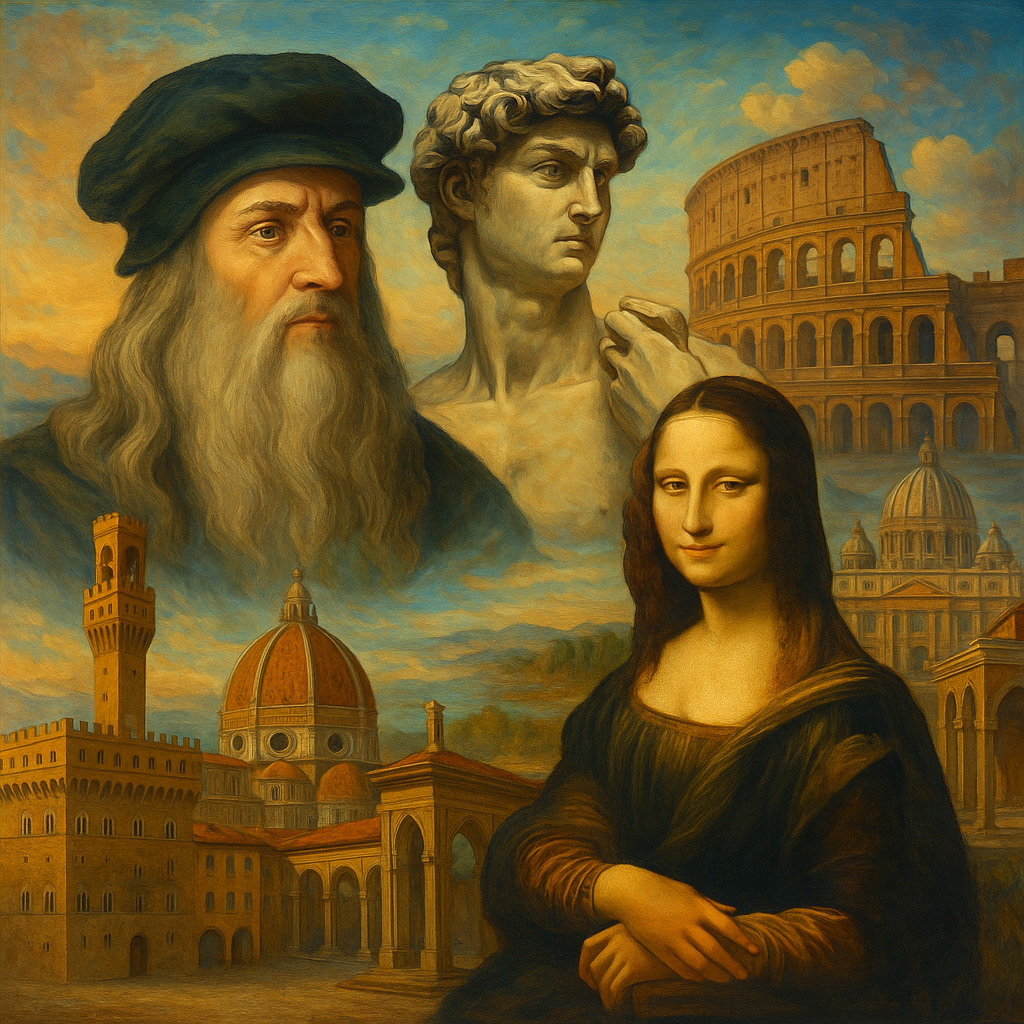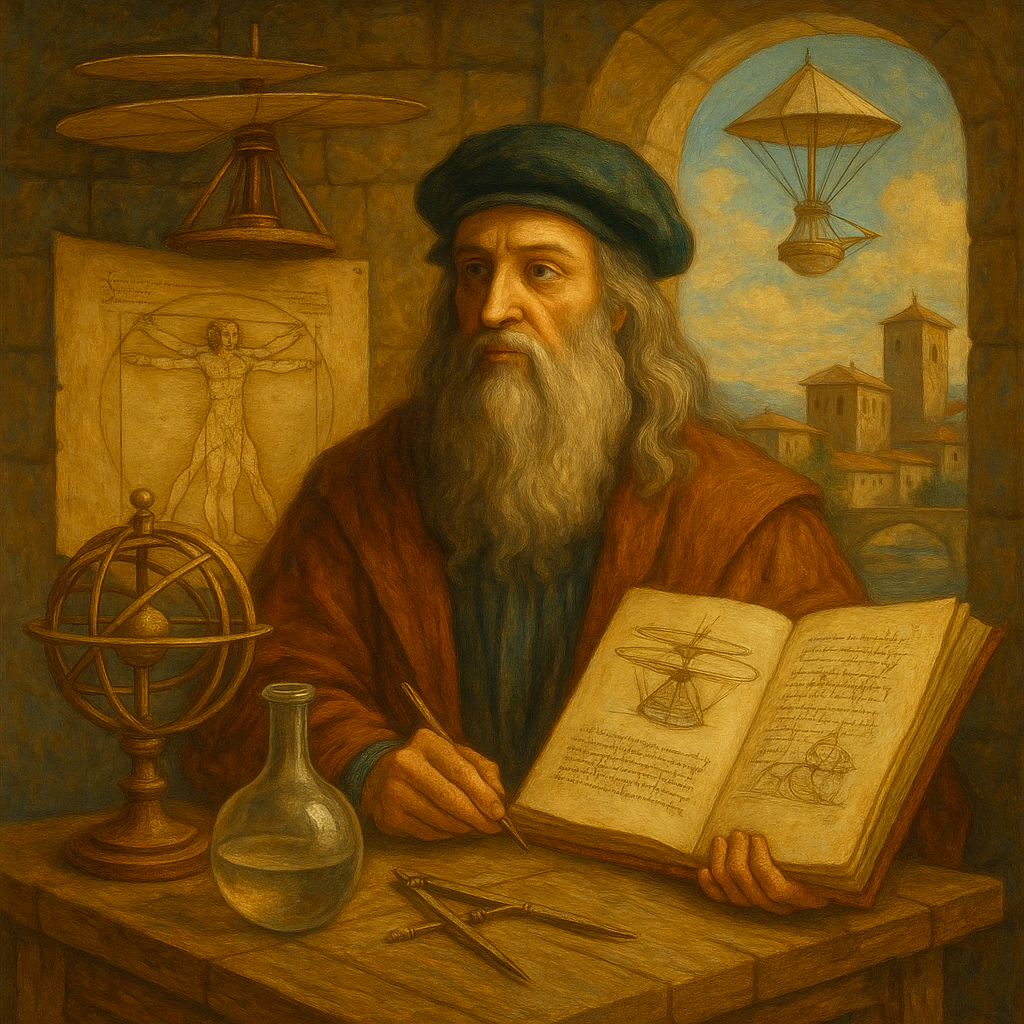The Renaissance, meaning “rebirth,” was a profound cultural movement that transformed Europe between the 14th and 17th centuries. It marked a renewed interest in classical antiquity, humanism, and scientific inquiry, setting the foundation for the modern Western world. But why did this transformative era begin in Italy? In this article, we explore the key factors that made Italy the cradle of the Renaissance, focusing on its art, culture, and politics.

1. Italy’s Strategic Geographical and Economic Position
Italy’s unique geography and thriving economy were instrumental in sparking the Renaissance. Located at the crossroads of Europe, Africa, and the Near East, Italian city-states such as Florence, Venice, and Genoa became major centers of trade and commerce during the late Middle Ages.
The wealth generated from trade with the Byzantine Empire, the Islamic world, and other Mediterranean powers allowed Italian merchants and bankers to accumulate unprecedented fortunes. Notable banking families, such as the Medici in Florence, used their wealth to patronize artists, architects, and scholars. This economic prosperity created an environment where creativity and intellectual exploration could flourish.
Moreover, Italy’s city-states competed with each other for prestige and influence. This rivalry led to investments in monumental architecture, public art, and universities, further fostering an atmosphere ripe for cultural renewal.
2. The Legacy of Classical Antiquity
Italy’s connection to its Roman past significantly influenced the rise of the Renaissance. Ruins of Roman architecture, statues, and manuscripts were omnipresent, reminding Italians of their illustrious history. The fall of Constantinople in 1453 also played a vital role, as many Greek scholars fled to Italy, bringing with them ancient texts and knowledge that had been preserved in the Byzantine Empire.
These classical influences inspired a shift in focus from purely religious themes to the exploration of human nature, individual achievement, and secular subjects—hallmarks of Renaissance humanism. Figures like Petrarch (1304–1374), often called the “Father of Humanism,” led this intellectual revival by recovering and studying ancient Latin texts.
3. Political Fragmentation and Civic Pride
Unlike other European regions, Italy was not unified during the Renaissance. Instead, it consisted of numerous independent city-states, such as Florence, Venice, Milan, and the Papal States, each with its own government and military.
This political fragmentation encouraged competition, which paradoxically led to a cultural blossoming. City-states sought to outshine each other through the commissioning of art, the establishment of libraries, and the construction of grand buildings. For instance, Florence’s Medici family sponsored artists like Michelangelo and Leonardo da Vinci, while Venice’s Doges invested heavily in elaborate palaces and churches.
Additionally, civic pride inspired the concept of “civic humanism,” emphasizing the role of educated citizens in public life. This ideal encouraged engagement in politics, the arts, and education, further advancing Renaissance ideals.
4. The Role of the Catholic Church and Papal Patronage
Despite the secular shift in many areas of Renaissance thought, the Catholic Church remained a powerful institution and a significant patron of the arts. The Papacy, based in Rome, sought to glorify the Church’s authority through grand artistic projects.
Popes such as Julius II and Leo X commissioned renowned artists to create masterpieces that would demonstrate the Church’s power and spiritual supremacy. Some of the most iconic works of the Renaissance, including Michelangelo’s Sistine Chapel ceiling and Raphael’s frescoes in the Vatican, were products of papal patronage.
Moreover, religious orders and cathedrals across Italy sponsored art and architecture, leading to a fusion of sacred themes with humanist ideals.
5. Advances in Art: From Giotto to Leonardo da Vinci
Italian artists revolutionized the visual arts during the Renaissance by introducing new techniques and perspectives that profoundly influenced Western art.
The Early Renaissance
The foundations were laid by artists such as Giotto di Bondone (c. 1267–1337), who broke from the medieval Gothic style by introducing more naturalistic figures and spatial depth. Filippo Brunelleschi (1377–1446) further advanced these ideas through his development of linear perspective, a technique that allowed artists to create the illusion of three-dimensional space on a flat surface.
The High Renaissance
By the late 15th and early 16th centuries, the Renaissance reached its zenith with figures such as Leonardo da Vinci, Michelangelo Buonarroti, and Raphael Sanzio.
Leonardo da Vinci (1452–1519) epitomized the Renaissance ideal of the polymath. His works, such as the “Mona Lisa” and “The Last Supper,” combined artistic mastery with scientific observation.
Michelangelo (1475–1564) created some of the most iconic sculptures and paintings of the period, including “David” and the Sistine Chapel ceiling.
Raphael (1483–1520) was celebrated for his harmonious compositions and refined depictions of the human form, as seen in “The School of Athens.”
The innovations in proportion, anatomy, and perspective developed by these artists set new standards that would influence art for centuries.
6. Humanism and the Flourishing of Literature
Humanism, a key intellectual movement of the Renaissance, emphasized the study of classical texts, the dignity of the individual, and the potential for human achievement. This philosophy found fertile ground in Italy due to the rediscovery of ancient manuscripts and the support of wealthy patrons.
Italian writers such as Dante Alighieri, Francesco Petrarch, and Giovanni Boccaccio laid the groundwork for Renaissance literature:
Dante’s “Divine Comedy” (early 14th century) blended medieval religious themes with classical philosophy and humanist ideals.
Petrarch revived interest in ancient Roman literature and is considered a pioneer of the sonnet form.
Boccaccio’s “Decameron” depicted the lives and follies of ordinary people, reflecting a new interest in human experience and individuality.
Later authors like Niccolò Machiavelli contributed to political philosophy with works such as “The Prince,” offering pragmatic insights into power and governance that departed from traditional moral and religious frameworks.
7. Scientific Inquiry and Technological Innovation
The Renaissance in Italy was not limited to art and literature; it also encompassed advancements in science and technology.
Leonardo da Vinci’s notebooks reveal his fascination with anatomy, engineering, and physics. Additionally, Italian scholars contributed to the fields of astronomy, mathematics, and medicine. For instance, Leon Battista Alberti applied mathematical principles to architecture, while Luca Pacioli formalized double-entry bookkeeping, a practice crucial for commerce and finance.
The invention of the printing press by Johannes Gutenberg in the mid-15th century, although developed in Germany, had a profound impact on Italy. It facilitated the rapid dissemination of classical and contemporary works, accelerating the spread of Renaissance ideas throughout the peninsula and beyond.

8. The Influence of Wealthy Patrons
One of the most distinctive features of the Italian Renaissance was the role of private patronage. Wealthy individuals and families, motivated by civic pride, religious devotion, or personal ambition, funded artists, architects, and scholars.
The Medici family in Florence is perhaps the most famous example. Their patronage supported luminaries such as Botticelli, Leonardo, and Michelangelo, helping to make Florence a leading cultural center.
In Milan, Ludovico Sforza commissioned Leonardo da Vinci to create “The Last Supper,” while in Rome, papal patronage led to the transformation of St. Peter’s Basilica into the architectural marvel it is today.
Conclusion: Why Italy Led the Renaissance
Italy’s leadership in the Renaissance was no accident. A combination of geographic advantage, economic prosperity, political competition, classical heritage, and the strategic patronage of the arts created a unique environment for cultural flourishing.
The innovations in art, philosophy, science, and politics that emerged from Italy during this period reshaped Europe and laid the groundwork for the modern world. From the paintings of Leonardo da Vinci to the political theories of Machiavelli, the Italian Renaissance remains one of history’s most influential and celebrated epochs.
